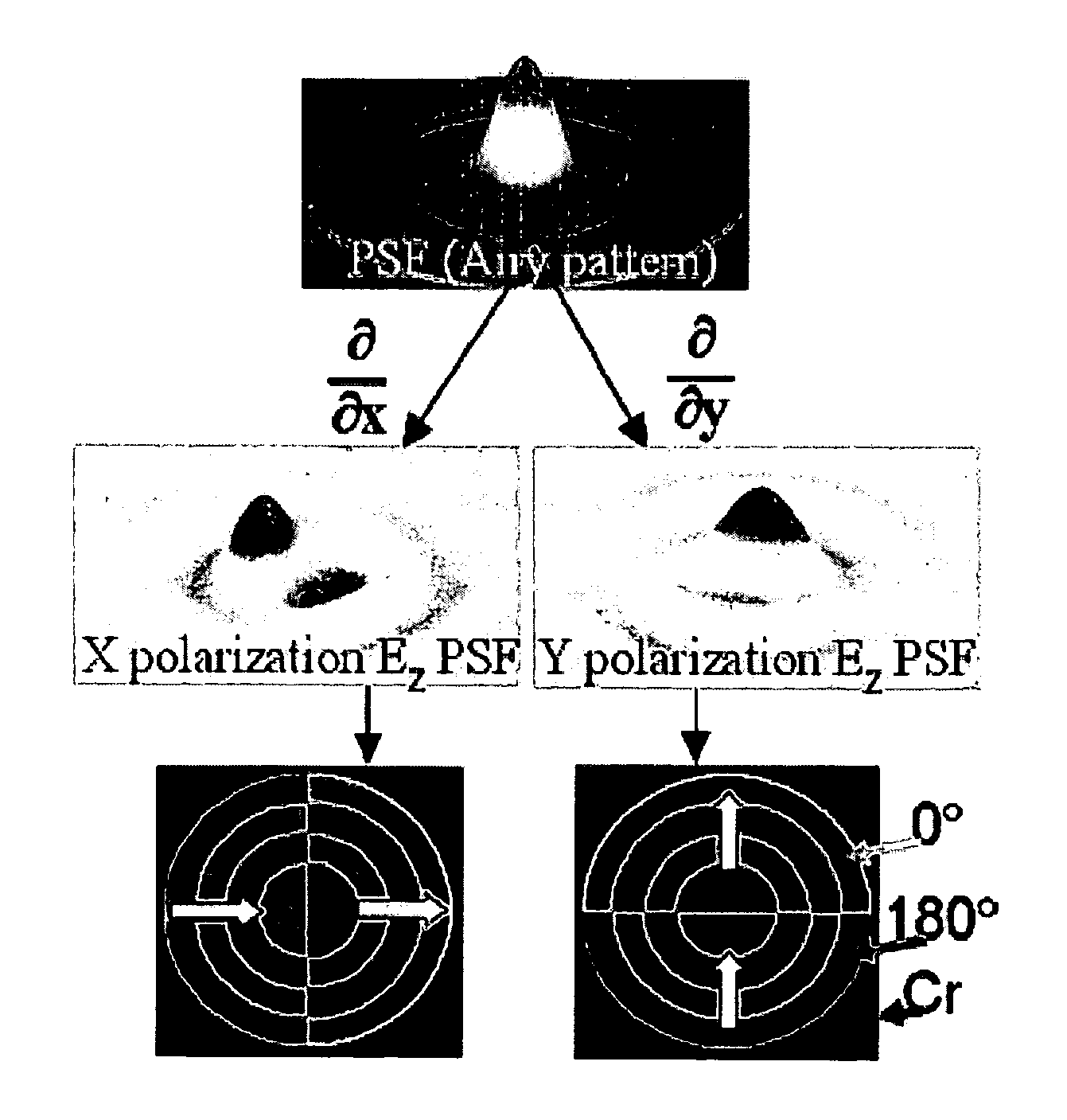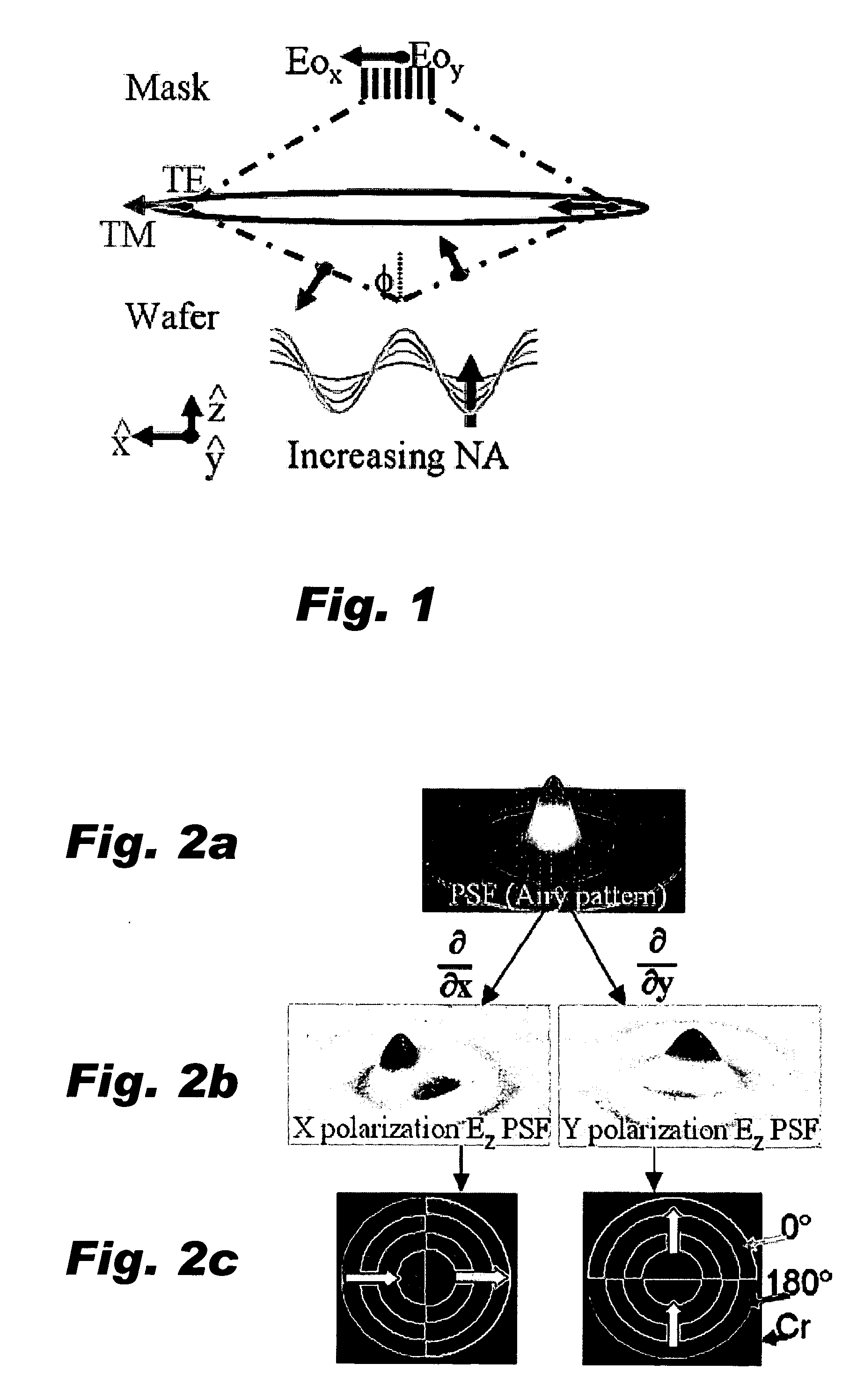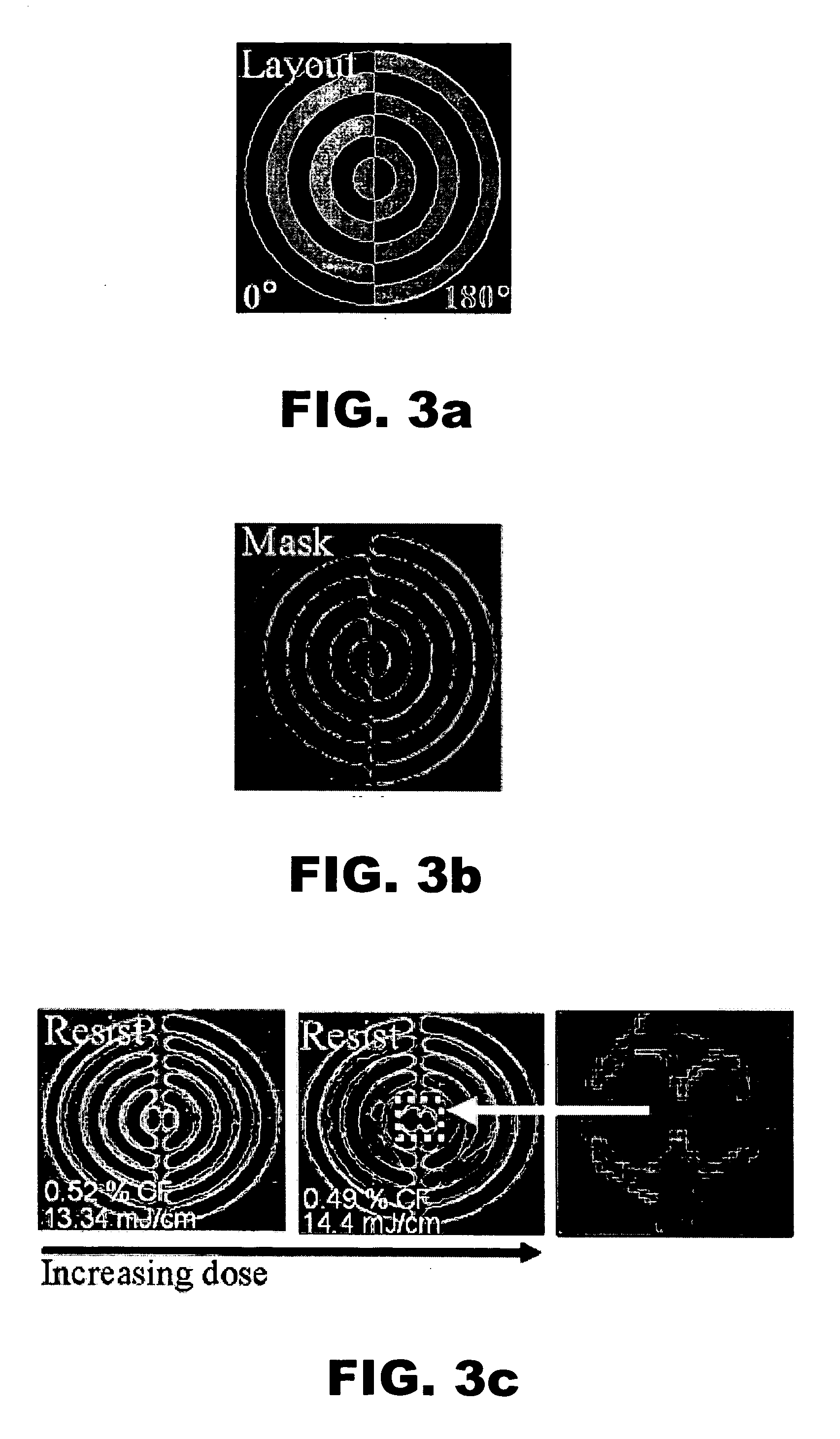Phase-shifting test mask patterns for characterizing illumination polarization balance in image forming optical systems
a technology of image forming optical system and phase shifting test, which is applied in the field of phase shifting test mask pattern for characterizing illumination and mask quality, and achieves the effect of accurate full pupil polarization characterization
- Summary
- Abstract
- Description
- Claims
- Application Information
AI Technical Summary
Benefits of technology
Problems solved by technology
Method used
Image
Examples
Embodiment Construction
[0022] As noted above, high numerical aperture (NA) lens systems allow for large angle spatial frequencies which, in turn, produce smaller features on the wafer. However, a generally unwanted side effect of high NA imaging is the introduction of an electric field component oriented in the z direction, or normal to the wafer plane. This z component of the electric field is dependent only on the polarization component oriented radially in the pupil, often referred to as the transverse magnetic (TM) component. As shown in FIG. 1, this z component originates from the oblique angle of incidence and, since intensity is the square of the electric field, becomes appreciable at high NA. Thus, in the realm of high NA imaging, traditional scalar diffraction theory begins to breakdown and the true vector nature of light must be considered.
[0023] The PSM polarimeters in accordance with the invention create a measurable z-component signal by engineering which polarization component becomes subje...
PUM
 Login to View More
Login to View More Abstract
Description
Claims
Application Information
 Login to View More
Login to View More - R&D
- Intellectual Property
- Life Sciences
- Materials
- Tech Scout
- Unparalleled Data Quality
- Higher Quality Content
- 60% Fewer Hallucinations
Browse by: Latest US Patents, China's latest patents, Technical Efficacy Thesaurus, Application Domain, Technology Topic, Popular Technical Reports.
© 2025 PatSnap. All rights reserved.Legal|Privacy policy|Modern Slavery Act Transparency Statement|Sitemap|About US| Contact US: help@patsnap.com



